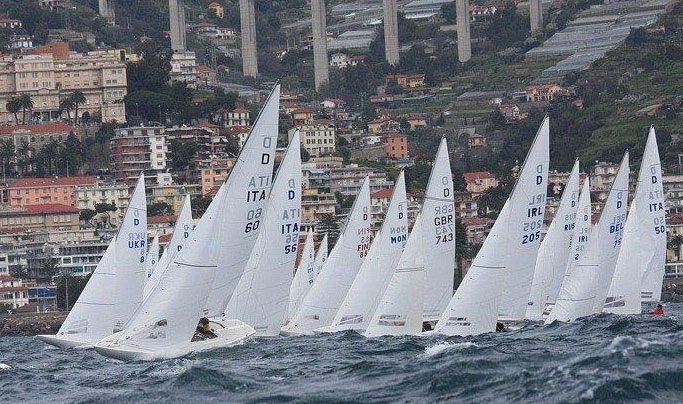History of the Dragon
The First Dragon
In 1928, a design competition was launched by the Royal Gothenburg Yacht Club in Sweden for an affordable cruising keelboat that was “relatively fast, externally attractive and seaworthy.” Johan Anker (1871-1940), already an eminent yacht designer and winner of an Olympic Gold Medal in the 6-meter class, won the competition with his one-design entry based on the 20 square-meter rule. The name of the design was, of course , the Dragon and the first was built in 1929. The dimensions were, and remain, LOA 8.9m, LWL 5.7m, beam 2.0m and draught 1.2m with a total overall weight of 1,700 kg. The Dragon quickly became popular in many nearby countries. International competition began with the donation of the Dragon Gold Cup by the Clyde Yacht Club Conference in 1937.
Olympic Era
After many yacht classes disappeared during World War II, Peter Lunde, one of Norway’s top Dragon sailors, traveled to London in 1946 with the goal of promoting new international regatta classes. He brought with him the Anker family’s permission to use their drawings internationally, as long as they were approved by the International Yacht Racing Union (now known as World Sailing). The Dragon was awarded Olympic status that year. It remained the Olympic one-design three-person keelboat class from 1948 to 1972, during which time it was upgraded for racing with the addition of a genoa and spinnaker, as well as supporting rigging changes. In 1961, the International Dragon Association (IDA) was formed to manage the evolution and consistency of the boat. This era saw the greatest expansion of the Dragon class worldwide, with individual Dragons or Dragon fleets on almost every continent.
Olympic Aftermath
After being dropped from the Olympics in 1972, there was much debate about the future of the Dragon class. Until that point, Dragons were built with carvel-planked wood, but fiberglass was the latest technology. The IDA, in collaboration with Børresen in Denmark, developed plans for a fiberglass Dragon that would maintain the competitiveness of the wooden Dragons. The class owes a great deal to Børresen, who managed the transition from wood to fiberglass construction expertly, ensuring that both types of boats could compete on equal terms. Despite this important development, the Dragon class declined and was significantly reduced in numbers in many countries. However, it continued to attract top sailors looking for strong competition in a non-Olympic class. In the mid-1980s, the class began to grow again with the emergence of a second major builder, Petticrows. By the mid-1990s, the average number of boats built each year was 25-30, and major competitions regularly had 80-100 boats.
Modern Days
Today, the Dragon class is active in 30 countries on five continents, with over 1,400 registered boats and many more used for day sailing or cruising. The World Championships are held in odd-numbered years, and the European Championships are held annually. The Gold Cup, held annually in certain specified European countries, is unique in that all six races count without discard.
The crew of three or four makes for a tightly knit unit without the need for hired heavyweights. Class rules ensure level racing, and the ease of trailing makes international competition accessible to all budgets. Spars and sails are easily adjustable while racing, allowing a skilled crew to optimize the boat for any conditions. Dragon races cannot be won by brute strength. The Dragon’s design philosophy has made it a class where extremely close racing is the norm, and where races are won by the crew’s mastery of the conditions and tactics on the course.
Plenty of information regarding the class, its various regattas and championships is available via the International Dragon Class Association website.
Check the Dragon Speed Guide from North Sails where experts Ruairidh “Rory” Scott and Theis Palm answer your Dragon speed and boathandling questions.

